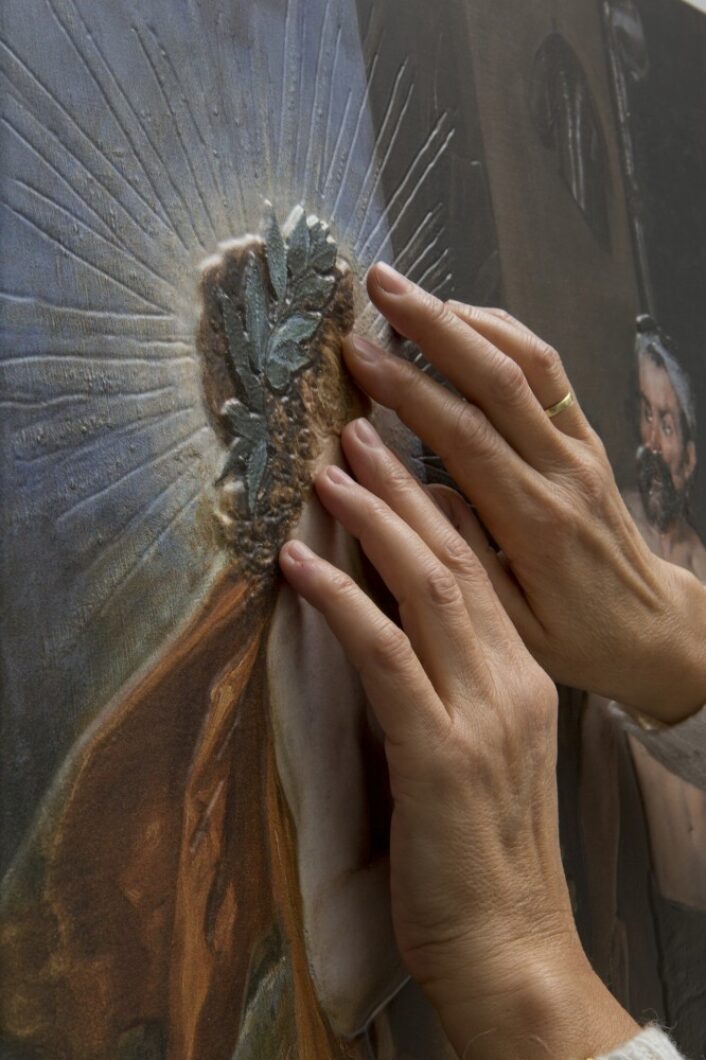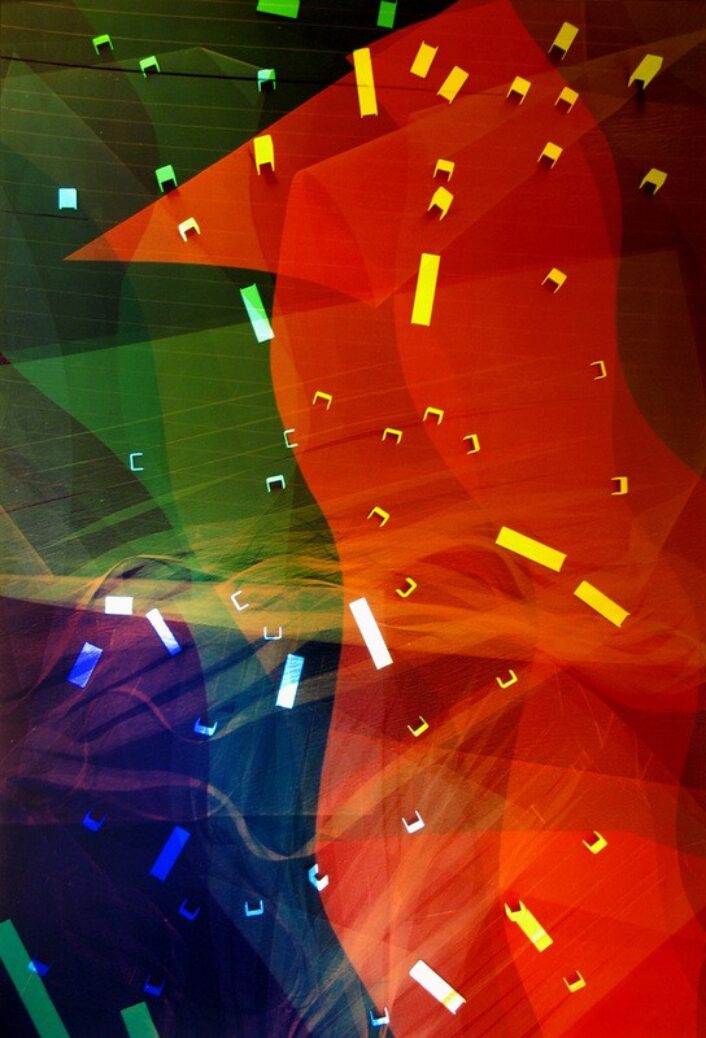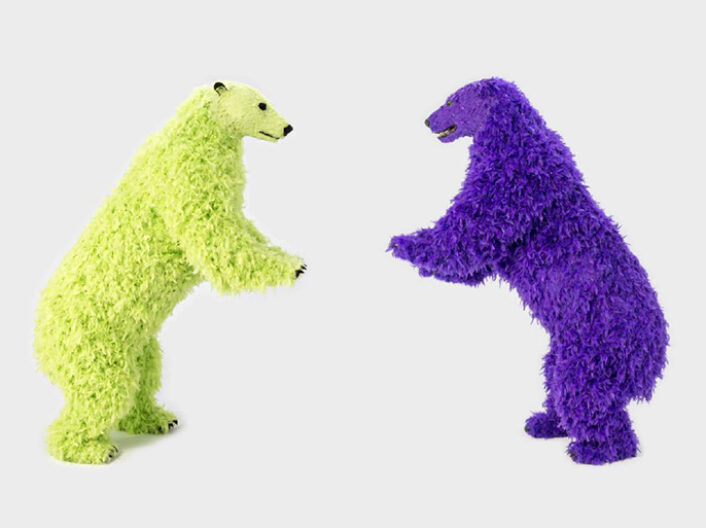Fine Art
Rauzier’s photographs create alternate realities
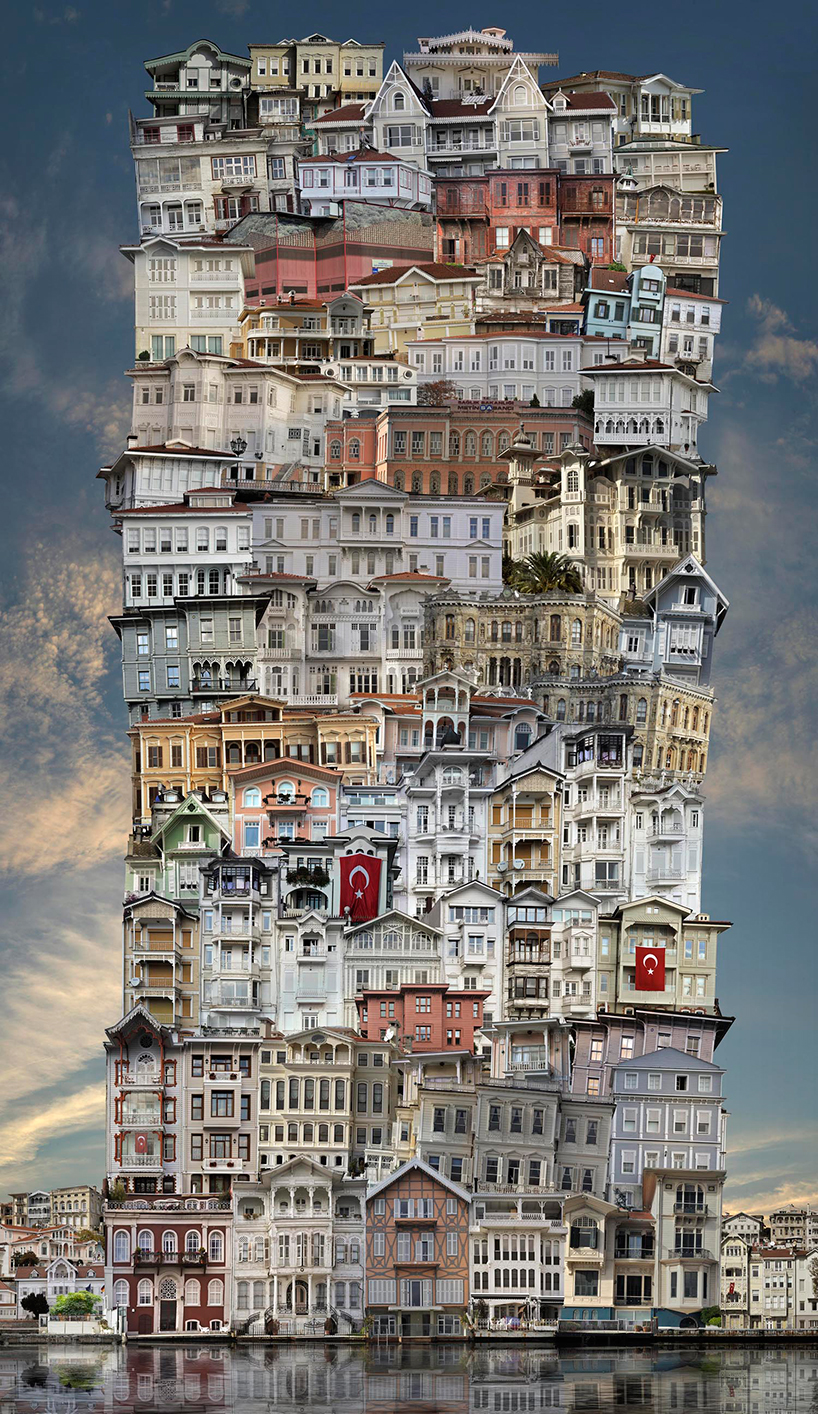
Jean-Francois Rauzier, Babel 16, C-type print, 170 cm. x 100 cm., 2015. Image courtesy of: DesignBoom
The French photographer, Jean-Francois Rauzier digitally stitches together many images to create “hyperphotos”. The cumulation and combination of so many photographs, sometimes upward of 3,500 individual images, enables Rauzier to show us what his dreams for the world are all about!
Interestingly enough, even though the image is digital… the end result looks more like a painting.
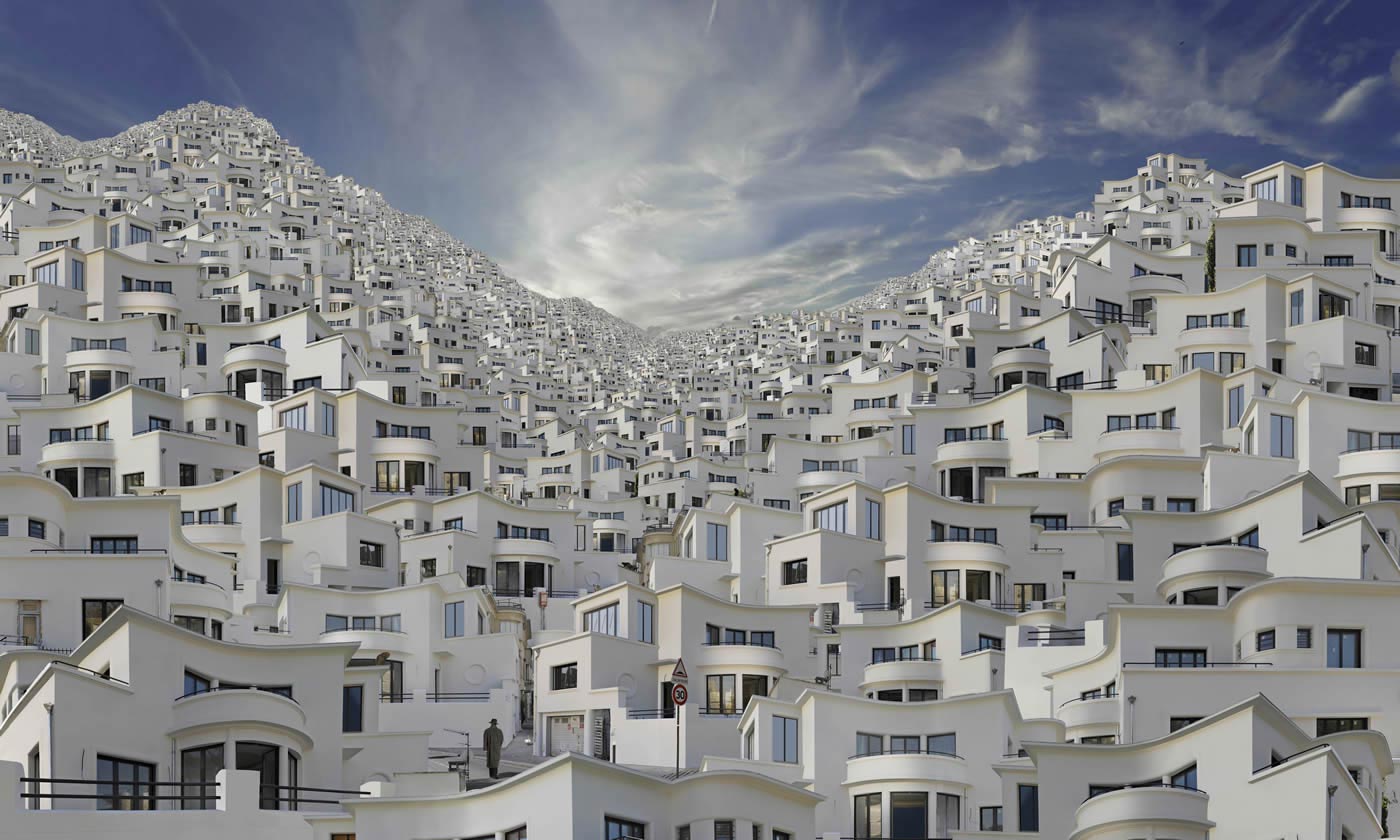
Jean-Francois Rauzier, Babylone Blanche, C-Print, 150 cm. x 250 cm., 2009. Image courtesy of Boum!Bang!
Rauzier’s fascination with photography began years ago when he helped his grandfather develop black-and-white film in a darkroom. Then a young man of 20, Rauzier was hooked as he saw the image slowly emerge.
Nevertheless, it took several years for this artist to find his “niche”. When traveling through Tuscany, 16 years later, the expanse of the landscape fascinated him. Disappointed that his wide-angle lens didn’t capture the beauty in it’s entirety, Rauzier began shooting multiple pictures which he intended to piece together.
Travel has remained the biggest source of inspiration for Rauzier. After deciding upon a destination, he does a lot of research to figure out what he wants to capture as the subject for his next project. Rauzier shoots from all angles and from very close-up, he shoots fast and furiously… and he doesn’t look at what he’s captured until later.
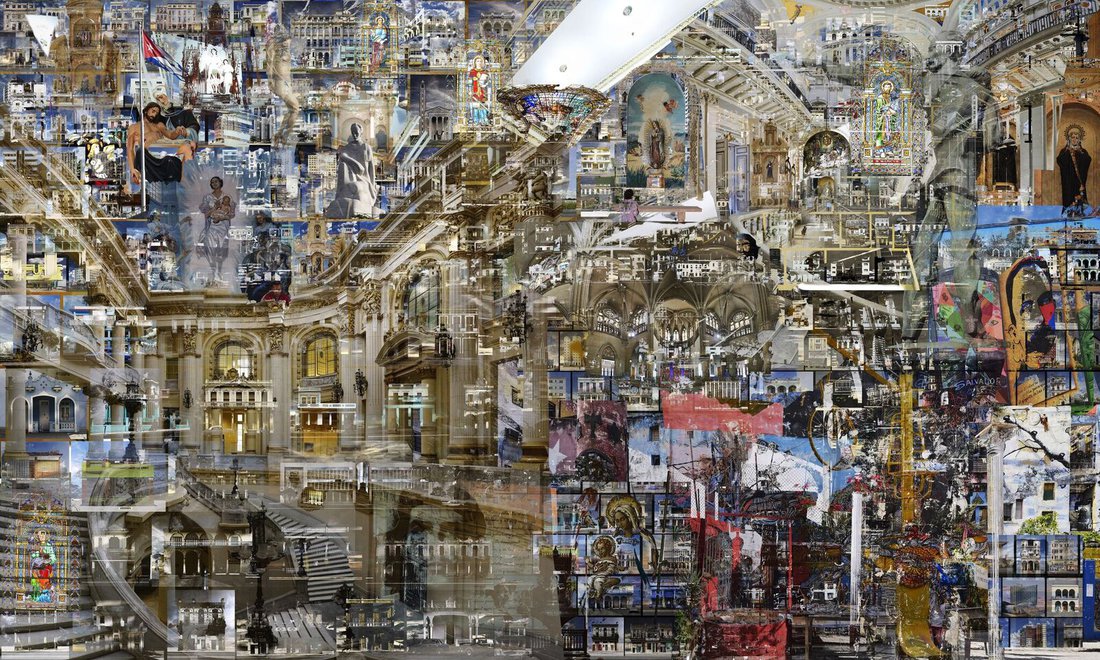
Jean-Francois Rauzier, Cuba, (edition of 8), C-Print, 58 cm. x 58 cm, 2017. All titles are produced in just one edition of eight prints, regardless of size. Additionally, each individual edition number has a detail unique to just that print, personally added by the artist. Image courtesy of Waterhouse & Dodd
The Paris-based photographer produces images that are roughly 10,000 times the resolution of a normal photograph. It’s quite difficult to believe how clear and crisp the images are when they’re so extremely large.
Beginning his career as a fashion photographer in the 1970s, Rauzier had a strong desire to break away from the traditional parameters of advertising and film photography. He wanted to capture everything in one image. However, that was impossible because he would have had to choose either a close-up or a wide-range lens. When digital technology reared it’s head, Rauzier realized that he could stitch together a grid of pictures creating a plethora of detail that will likely keep the viewer fascinated and intrigued for a long time!
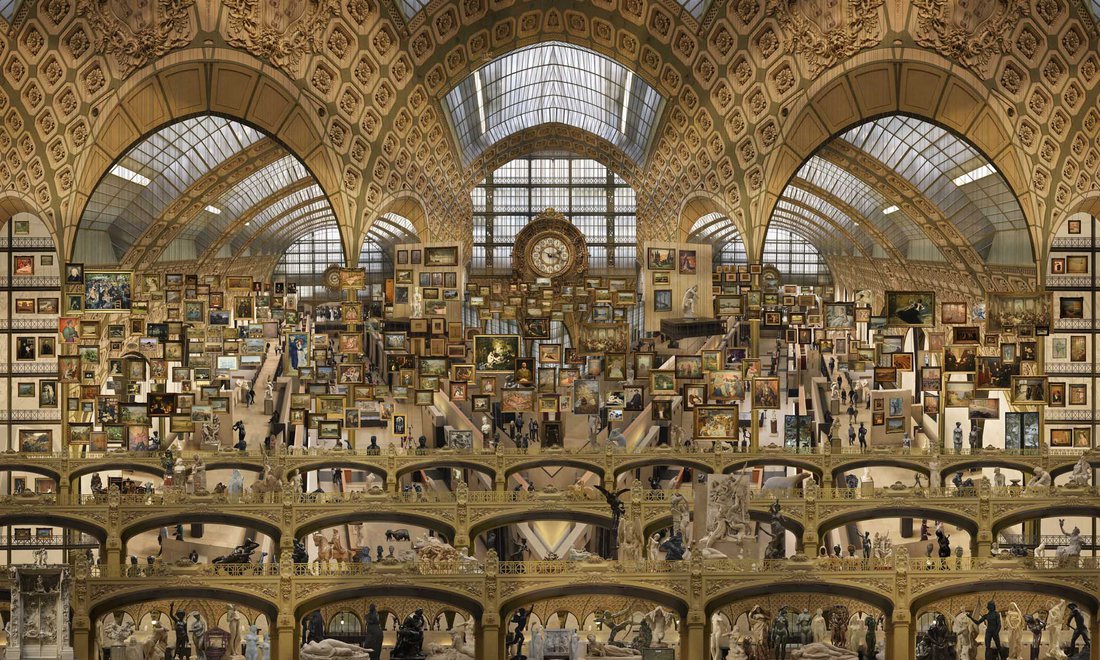
Jean-Francois Rauzier, Musee d’Orsay, C-print mounted on aluminum. 58” (h) x 98” (w), 2016. Image courtesy of Suzanne Lovell, Inc. from Expo 2017.
All this wouldn’t have been possible without present-day technology. Using photoshop, Rauzier layers and manipulates each scene, building it up piece-by-piece in an extremely laborious process.
Connoisseurs of Rauzier’s work report that they continue to see new details in his works which makes them so much fun to own.
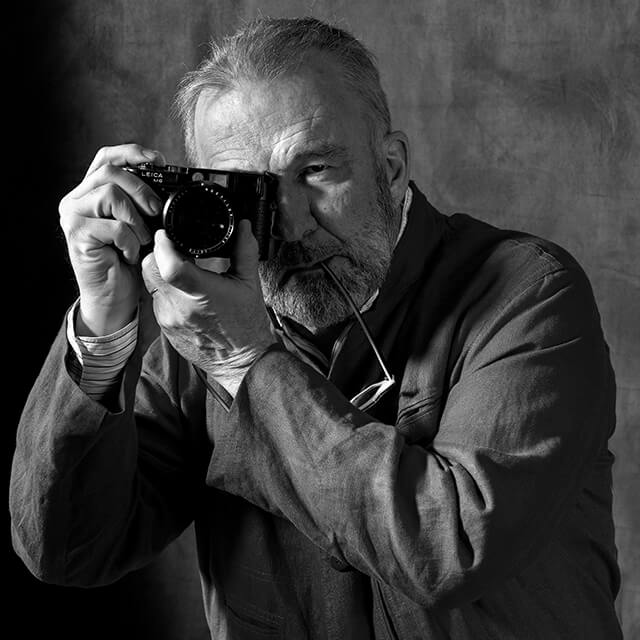
Jean-Francois Rauzier. Image courtesy of The Leading Hotels of the World, photographed by Marc Rosaz.
Whether they’re called hyperphotos or photomontages, there’s no denying that Rauzier’s pieces are extremely unique and fascinating… almost interactive! It’s as though the French photographer took some of the world’s most recognizable cityscapes, added a bit of Surrealism, and created a picture that lands somewhere between reality and fantasy.
